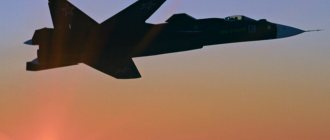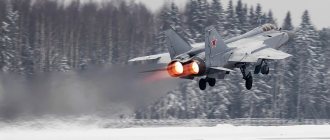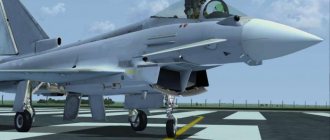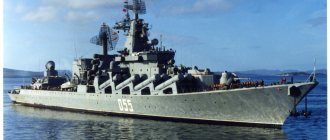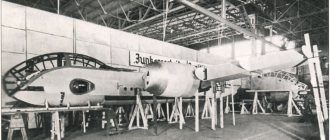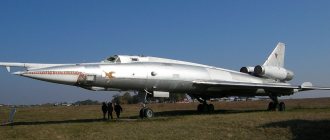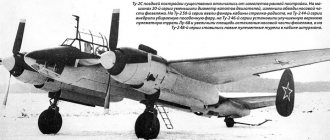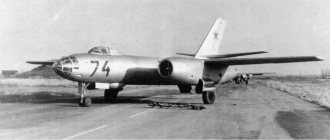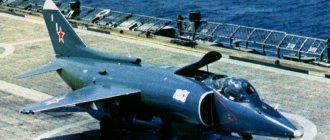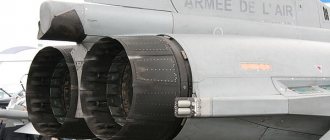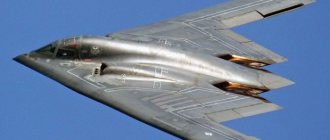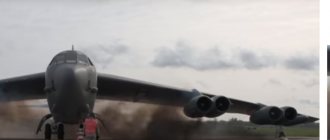An additional squadron of heavy MiG-31 fighter-interceptors will be deployed in Kamchatka. The mixed naval aviation regiment of the Pacific Fleet will receive replenishment. With modern weapons, these vehicles will be able to intercept cruise and hypersonic missiles, as well as drones. According to the classification adopted by the Aerospace Forces, aircraft weighing more than 30 tons are classified as “airships.” The MiG-31 received the informal name “combat airship” - its take-off weight exceeds 40 tons. According to experts, these aircraft will be able to control vast territories of the Far East and the Arctic. And if necessary, they will cover the nuclear forces of the fleet located on the peninsula.
Above the volcanoes
A fundamental decision was made to station an additional MiG-31 squadron in Kamchatka, sources in the Ministry of Defense told Izvestia. After modernization, the aircraft will go into service with the 317th mixed aviation regiment of the Pacific Fleet (PF), which is based at the Elizovo airfield in Petropavlovsk-Kamchatsky.
In May, Pacific Fleet Commander Admiral Sergei Avakyants noted that naval aviation fighters were mastering innovative combat training techniques in the region. In particular, during the exercise, the MiG-31 intercepted a cruise missile fired by a Tu-95MS bomber. And a pair of fighter jets shot down a Mosquito supersonic anti-ship missile flying at an extremely low altitude.
Starfish: Navy aviation completes the first stage of reform
Pilots actively work closely with coastal and ground forces, warships and submarines
Vehicles based on the peninsula will cover a huge part of Russian territory, noted military historian Dmitry Boltenkov.
“With their range and flight speed, interceptors will be able to control the space from the North Pole to the southeastern borders of the country,” he told Izvestia. “These aircraft are capable of performing a wide range of missions - escorting bombers over the Pacific Ocean, intercepting enemy aircraft, as well as cruise missiles.
The nuclear forces of the Russian Pacific Fleet are based in Kamchatka, the expert emphasized.
“In recent years, the defense of Kamchatka has been seriously strengthened,” said the historian. — This remote region is of great strategic importance. Marine units, coastal missile forces, and submarines are deployed there. And the MiG-31s provide cover for the entire group.
The history of the creation of the new MiG 27 attack aircraft
During the operation of the new fighter-bombers, significant shortcomings were identified that needed to be eliminated. They decided to modernize the aircraft in three main areas: improving the design of the aircraft, introducing new target equipment and strengthening on-board weapons. The prototype of the MiG-27 was the modernized MiG-23BM. The differences between the new aircraft were the new R-29B-300 engine and the PrNK-23 sighting and navigation system. Test pilot V.E. Menitsky first flew the MiG-27 prototype in the November days of 1972.
MiG-23BM
The lightweight and now unregulated air intake somewhat changed the appearance of the car. The MiG-23BM was equipped with a “type 3” wing with a new mechanism for changing the sweep, and the chassis was strengthened due to the increase in the mass of the combat load to 4 thousand kg. The composition of the weapons also changed - a 30-mm six-barreled gun GSh-6-30A and new on-board radar equipment appeared.
GSh-6-30A
The new machine was tested by the most experienced test pilots Fedotov, Menitsky, Orlov and Fastovets. Despite serious equipment failures and engine malfunctions, but thanks to the dedication of the pilots, testing of the new attack aircraft continued, and at the beginning of 1975, under the designation MiG-27, the aircraft was put into production.
Airship
The MiG-31 is the only fighter in the Russian Armed Forces whose commander is officially called the captain of the ship. This privilege is enjoyed by pilots of aircraft with a take-off weight of more than 43 tons. A fully fueled and armed two-seat interceptor exceeds this bar and is equal in weight to the Tu-134 passenger airliner.
Now modernized versions of the fighter, created in the late 1970s, are entering service. The MiG-31BM received a complete update of on-board electronics and an improved radar. The detection range of air targets has increased to 320 km. The interceptor can hit them at a distance of up to 280 km. So far, the aircraft remains the only one in the Aerospace Forces that is equipped with air-to-air missiles of such a range.
“Dagger” gang: a regiment with hypersonic missiles will appear in Siberia
The MiG-31 airfield with unique ammunition will be covered by the S-350 and Pantsiri
As Izvestia previously wrote, longer-range ammunition is also being developed for the MiG-31 - they will be capable of intercepting hypersonic targets, among other things.
“Today, not a single country in the world has an interceptor that would fly at such speeds and altitudes as the MiG-31, and at the same time be equipped with similar missiles,” Honored Test Pilot Colonel Igor Malikov told Izvestia. “Their main purpose in the region is to drive away enemy aircraft. The MiG-31 is very effective against air targets. I launched a lot of missiles from it, and I can say that they don’t make “wounded wounded” missiles. The ammunition is so powerful that it shatters the target into pieces. Neither reconnaissance aircraft nor other aircraft will escape such a fighter.
The contract for the modernization of 60 interceptors in the MiG-31BM version was signed in the summer of 2011. In the fall of 2014, an agreement was signed for a batch of another 54 airships. According to the developers, the combat effectiveness of the modernized version has increased by 2.6 times compared to the base model.
On the basis of the interceptor, projects were previously prepared for an anti-satellite complex and a “flying cosmodrome” for launching small spacecraft into Earth orbit. The unique characteristics of the fighter made it possible to equip it with the most modern weapons. In 2020, the MiG-31K variant was introduced, armed with the Kinzhal hypersonic missile. The ammunition allows the aircraft to strike targets at a distance of over a thousand kilometers.
Main modifications
The first version of the MiG-19, produced in a batch of about 50 vehicles, was a prototype SM-9/1, equipped with weapons of three 23-mm NR-23 cannons. In addition, these aircraft received underwing pylons for mounting weapons and PTB.
In production MiG-19S, the letter “C” meant the presence of an all-moving stabilizer instead of the same device with elevators. A vertical ridge is mounted under the fuselage to increase directional stability. The fighter was also equipped with three 30-mm HP-30 cannons.
Interceptor version equipped with Horizon-1 equipment for data transmission and guidance from a ground command post. This equipment made it possible to use R-3S air-to-air missiles.
MiG-19SV
The high-altitude target interceptor fighter was aimed at intercepting British Canberra reconnaissance aircraft. It was a lightweight production MiG-19S with more powerful engines, as well as a reduced flap angle and increased by 2 square meters. m wing area. Wing cannons were not installed in these vehicles, but the fuselage cannon was retained in the design. Built in a small series. An altitude-compensating suit with a pressure helmet was developed for the pilots of these machines. In December 1956, during flight tests of the MiG-1 9SV, it reached an altitude of 20.7 km.
MiG-19PM/PMU interceptors equipped with the Lazur ground guidance system were sometimes designated MiG-19PML. They were equipped with an all-moving horizontal tail, and for the first time this particular modification was equipped with the K-5M missile. There was no cannon armament, and instead of the K-5M, the suspension of unguided missiles of various types and calibers was allowed.
Combat use
The combat use of the MiG-21 fighter began in 1966 in Vietnam. Small, maneuverable, with high flight speed, the MiG-21 has become a very serious problem for the newest American fighter, the F-4 Phantom II. During six months of air combat, the US Air Force lost 47 aircraft, managing to shoot down only 12 MiGs.
The Americans were forced to begin courses in combat tactics against the MiG for their pilots.
During the Vietnam conflict, 70 MiG-21 fighters were lost, they flew 1,300 sorties and scored 165 victories. It should be noted that the figures differ from one source to another. However, the indisputable fact is that in that war the American F-4 Phantom lost to the Soviet fighter.
By the way, Hollywood has not released a single film dedicated to American pilots in Vietnam, because they had nothing special to be proud of in this war.
The next serious military conflict in which the MiG-21 took part was the war between India and Pakistan in 1971. At that time, various modifications of the MiG-21 were the basis of the fighter aircraft of the Indian Air Force. They were opposed by the Chinese J-6 fighter (a modification of the MiG-19), the French Mirage III and the F-104 Starfighter.
According to the Indian side, 45 aircraft were lost and 94 enemy aircraft were destroyed during the conflict.
In 1973, another Arab-Israeli conflict began, which was called the Yom Kippur War. In this conflict, MiGs of various modifications of the Syrian and Egyptian Air Forces were opposed by Israeli pilots flying Mirage III and F-4E Phantom II aircraft.
A particularly dangerous opponent was Mirage III. In many respects they were very similar. The MiG had slightly better maneuverability, but was inferior to the enemy in terms of radar characteristics and had worse visibility from the cockpit.
The Yom Kippur War forced pilots to remember such a tactical technique as close group air combat. It has not been practiced since the World War.
During the campaign, Syrian fighters conducted 260 battles and shot down 105 enemy aircraft. Their losses were estimated at 57 aircraft.
The MiG-21 took part during the war between Libya and Egypt, it was actively used in the Iran-Iraq war, as well as during a number of other local conflicts.
This fighter was used by Soviet troops in Afghanistan. After the departure of Soviet troops from this country, some of the planes fell into the hands of the Mujahideen. They participated in several air battles with Northern Alliance aircraft.
After the appearance of the fourth generation aircraft, the MiG-21 began to lose its air superiority. During air battles over Lebanon in 1979-1982. Israeli F-15A were significantly superior to the MiG in most characteristics. The Iraqi Air Force tried to use the MiG-21 against multinational forces in Iraq in 1991 to no avail.
History of creation
In the late 1940s and early 1950s, leading fighter designers around the world sought to master supersonic flight speeds. The speed of sound has already been achieved in a shallow dive by many aircraft, including the Soviet MiG-17, but a full-fledged supersonic fighter had to overcome this limit in horizontal flight. They tried to achieve an increase in speed both by improving aerodynamics and by installing more powerful engines.
The beginning of the history of the development of the MiG-19 is considered to be July 30, 1950, when I.V. Stalin set the task of creating a new type of fighter with a greater range than the MiG-15 and MiG-17. The very next year, the first twin-engine prototype of the new SM-1 aircraft was created, on which more powerful and compact engines began to be tested. During 1952, the flight prototype SM-2 appeared, which became a testing ground for achieving stable supersonic flight speeds. Greater sweep wings were tested on it, as well as the most optimal arrangement of the tail unit.
In 1953, at the OKB A.A. Mikulin managed to create an even more powerful AM-9B engine with an afterburner thrust of 3250 kgf in the same dimensions as the engines for the MiGs being developed, which made it possible to finalize prototypes of new aircraft in the shortest possible time. Prototypes of an interceptor fighter (SM-7) and a front-line fighter (SM-9) with two engines successfully passed flight tests, while the performance of another variant, the single-engine I-370 fighter, turned out to be unsatisfactory.
In January 1954, based on the results of the first flights on the pre-production model SM-9, test pilot G.A. Sedov praised the fighter as “easy to fly” and capable of consistently exceeding the speed of sound. Soon, Air Force Commander-in-Chief Air Marshal P.F. Zhigarev approved the adoption of the SM-9 into service and giving it the name MiG-19. In addition, the Soviet military-political leadership decided on the advisability of launching the MiG-19 aircraft into serial production, without waiting for the end of the full program of factory and state tests, which continued throughout 1954.
The first production MiG-19s were built according to the drawings of the Mikoyan and Gurevich Design Bureaus and began to arrive in combat air regiments in March 1955. Already on July 3 of the same year, 48 of the newest fighters were shown to the public at an air parade in Tushino. Among them, an aerobatic team performed on the MiG-19, headed by the commander of the USSR Air Defense Aviation and twice Hero of the Soviet Union, Colonel General E.Ya. Savitsky. After this parade, the vehicle received the NATO code designation Farmer-A. Since 1958, interceptors based on the MiG-19 with missile weapons began to arrive in military units.
Project development participants
Employees of the Central Aerohydrodynamic Institute took part in the design of the aircraft. In addition to them, specialists from various professions from the Sukhoi design bureau participated in the project. The project was also developed by employees of the Mikoyan and Gurevich design bureaus, who won the competition. However, the project turned out to be so expensive that it had to be divided into two: a heavy and a light advanced fighter. It was decided to entrust the design of the first version of the aircraft to specialists from the Sukhoi Design Bureau, and the second to employees of the Gurevich and Mikoyan Institute.
The year 1974 was marked by the beginning of the design of a light fighter with the working name MiG-29A. It was first tested in flight in 1977. A month later, it was photographed by American reconnaissance satellites.
MiG-29OVT at MAKS-2005
Mass production
In general, this delay is due to the crash of two planes. The first mass-produced fighters appeared at the Kubinka base a year later. A year later, the cars underwent mass testing for the first time. Then the instructor regiment of the Combat Use Center also received its fighters. The first fighter regiment, which also received MIGI, was stationed in Ivano-Frankivsk. Thanks to the highly qualified pilots, all these air regiments quickly achieved operational readiness.
When the first aircraft were delivered, the leadership of the air regiments divided the tasks between light and heavy aircraft and machines. The heavy model had an increased range, so it could search for air and ground targets at fairly large distances. The duties of a heavy fighter pilot included the detection and destruction of NATO aircraft.
MiG-29M/OVT - all-angle
